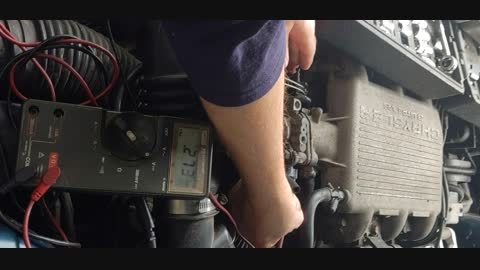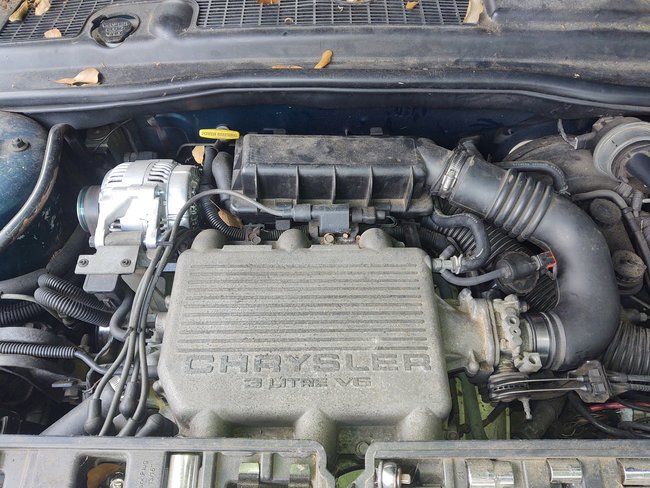The Lebaron name was used over many years with many different models, and different engine sizes with different ignition systems. You have to list those details when asking about an engine performance problem so I can search for the right diagrams when necessary, and so I give you the right information.
The most common model in '95 was the twin to the Plymouth Acclaim. Those came with a 2.5L four-cylinder Chrysler engine or a 3.0L V-6 Mitsubishi engine. Both use a distributor, but they have completely different ignition systems.
One thing you should be aware of first is since the battery was disconnected for other service, the Engine Computer lost its memory. Most of the sensor personalities and fuel trim data will be relearned as soon as you start driving, without you even noticing. The one notable exception is "minimum throttle". That requires a very specific set of conditions to take place, and one of them is there can't be code 24 set. We should look at that first, and if the throttle position sensor circuit is okay, the relearn procedure may take care of the stalling.
Idle speed will be much too low when minimum throttle hasn't been learned yet. The engine may not start unless you hold the accelerator pedal down 1/4". You won't get the normal idle flare-up to 1500 rpm at start-up, and it will tend to stall at stop signs. To meet the conditions for the relearn to take place, drive at highway speed with the engine warmed up, then coast for at least seven seconds without touching the pedals.
The best way to check the throttle position sensor circuit is to view the signal voltage on a scanner. The second-best way is to use your voltmeter, but that is only going to tell you the voltage being sent by the sensor, not necessarily what the Engine Computer is seeing. To start at the sensor, there's three wires going to it. For the readings to be valid, they have to be taken with the sensor plugged in. You can use a stretched-out paper clip to reach in through the weather-pack seal alongside each wire. If you need help using the voltmeter, check out this article:
https://www.2carpros.com/articles/how-to-use-a-voltmeter
If you have an older analog meter with a pointer, let me know. I can help you set it up. Also, this article shows a meter that selects the range automatically. If yours has to be set manually, set it to the20 volt DC range. That will let it read any voltage from 0.0 to 19.99 volts. You won't hurt a digital meter by using the wrong range.
Measure the voltages on the three wires with the ignition switch turned to the "run" position. The engine doesn't have to be running. You will find 5.0 volts on one wire, and 0.2 volts, (0.0 volts for all practical purposes), on the ground wire. Those two have to be right for the third one to be right. That is the middle wire. You should find roughly 0.5 to maybe 0.7 volts with the throttle closed, and it should increase smoothly with no dropouts to around 4.2 to about 4.5 volts at wide-open-throttle. If that is what you find, the code 24 may have set due to the throttle position sensor being unplugged at some point while the ignition switch was on. You can erase the code by disconnecting the negative battery cable for a minute, but then you will need to do the relearn procedure again.
Needing to relearn minimum throttle is by far the most common cause of stalling on Chrysler vehicles. The clue is the engine will always restart right away, but you may have to hold the accelerator pedal down a little. If the stalling occurs while driving, and / or the engine has to cool down for about an hour before it will restart, that is a different set of symptoms and requires a different diagnostic steps. We can tackle that if it becomes necessary.
Don't worry about the other two fault codes. Code 12 just means the battery was recently disconnected, and code 55 means the Engine Computer is done reading out the codes.
Friday, June 18th, 2021 AT 6:14 PM





